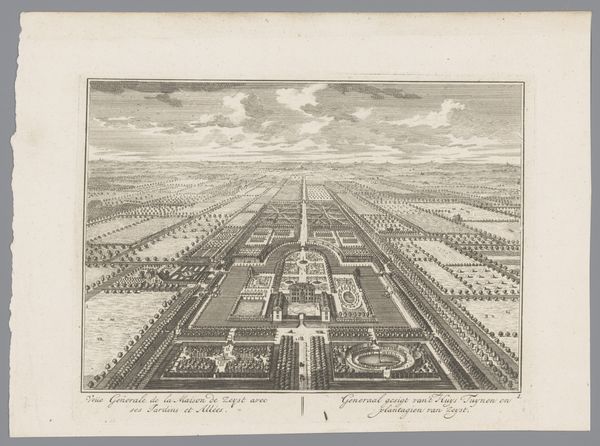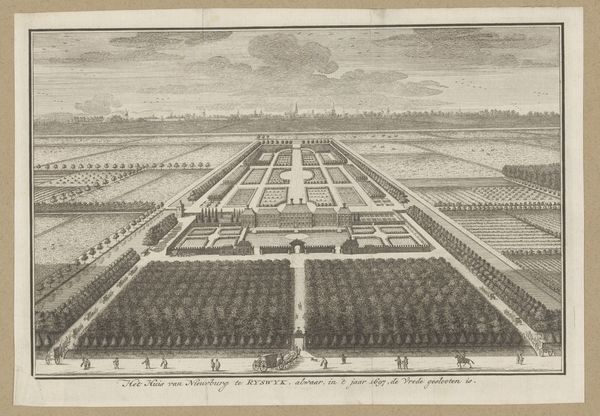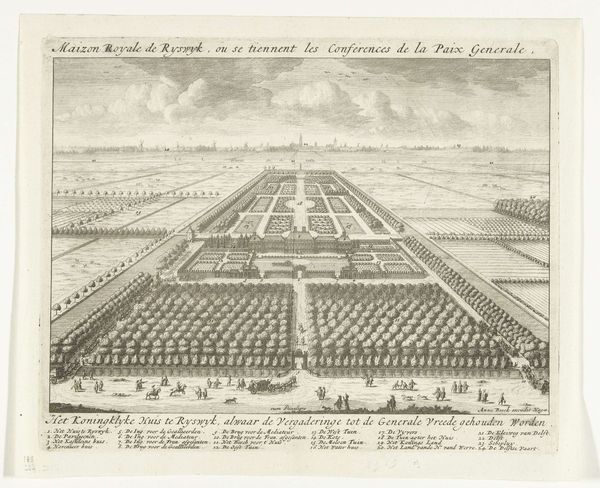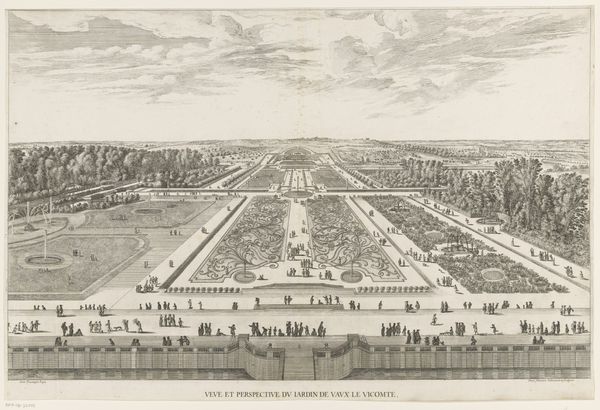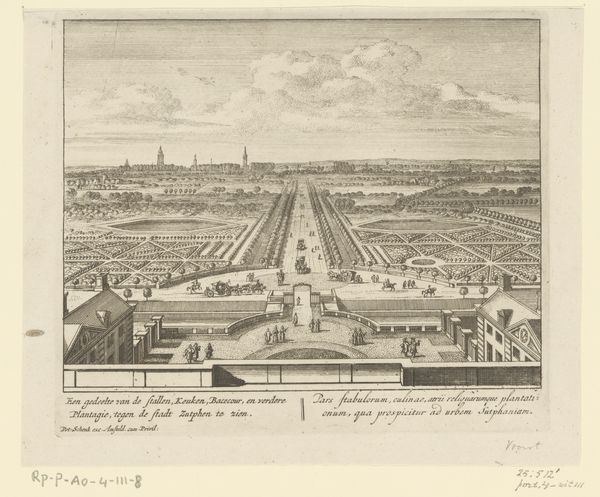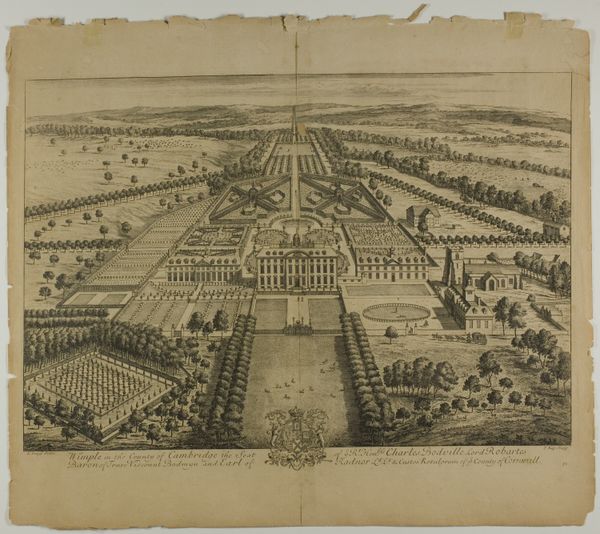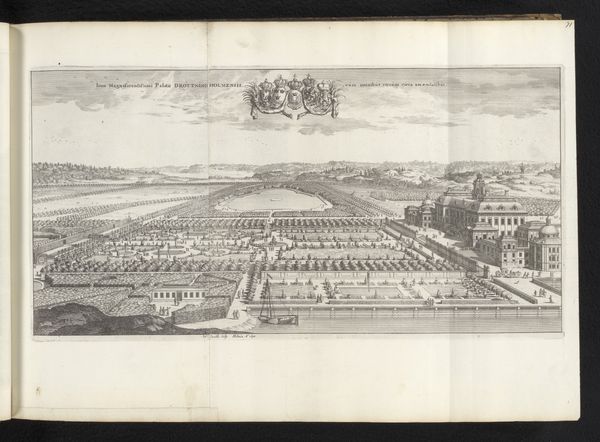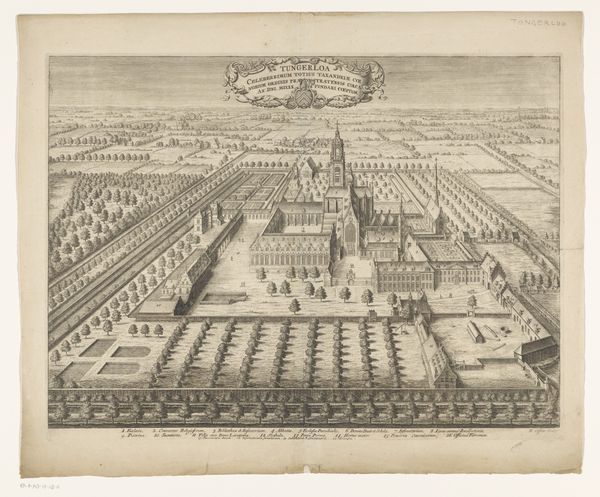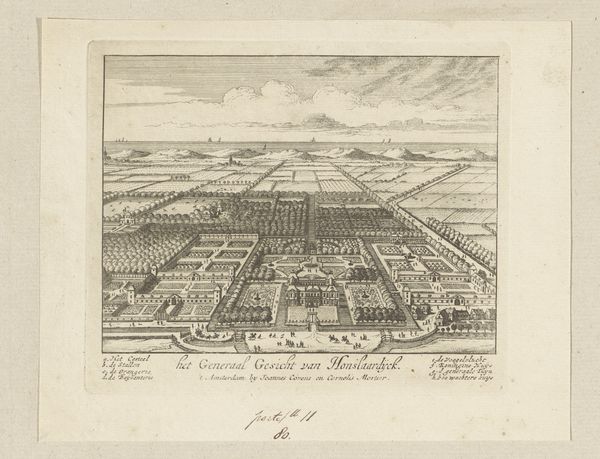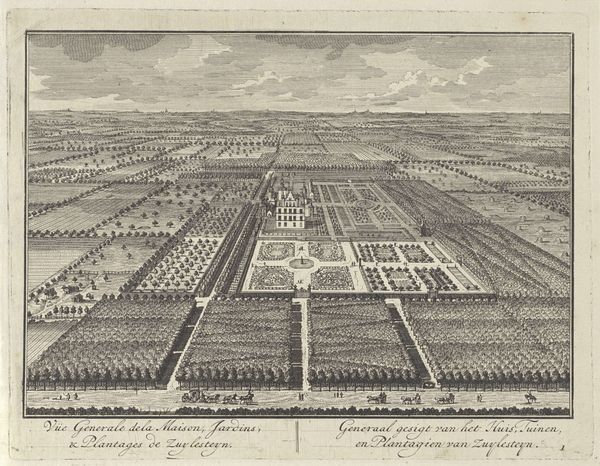
drawing, print, engraving
#
drawing
#
baroque
#
dutch-golden-age
# print
#
landscape
#
perspective
#
cityscape
#
engraving
Dimensions: height 159 mm, width 211 mm
Copyright: Rijks Museum: Open Domain
Curator: Just look at that vanishing point! This print, entitled "Gezicht op Zeist vanaf Slot Zeist gezien," was made sometime between 1682 and 1726. It is now held in the collection of the Rijksmuseum. The artist was Daniël Stopendaal. Editor: It's such a carefully ordered dreamscape! Almost aggressively so. What strikes me most is how this engraving almost revels in depicting the artificiality of the landscape; you see this meticulous manipulation of nature pushed to its absolute limit. It’s less a window onto a real place and more an expression of power and control. Curator: I find it wonderfully optimistic, almost utopian. The sheer labour needed to realize this… the formal gardens, those precisely planted trees… It's all a testament to human will imposing itself on the land. The technique, this precise engraving work, echoes that controlling intention. It all becomes material; we feel the intentionality. Editor: Intentionality perhaps fueled by exploitation. Think of the vast resources, both material and human, poured into achieving such visual precision. This isn’t just landscape design; it's landscape engineering, reliant on an entire infrastructure of labor to maintain that flawless symmetry. You feel that this is not an accessible garden. Curator: It feels to me like stepping into the mind of someone who dreams in straight lines! I mean, yes, those human costs are a reality, a heavy price paid. And I don't deny that this image embodies an elite worldview. Yet there is also an element that almost feels aspirational; a yearning for clarity, for order. Do we lose sight of the artist with these criticisms? Editor: Oh, Stopendaal's craftsmanship is undeniable! The meticulous detail, particularly in depicting the parterres and avenues...it showcases skill with the burin. But I am trying to understand whose vision he was realizing with these particular techniques, what forces gave them significance. Ultimately, the enduring questions are always about how things are made and for whom, right? Curator: Right! It helps see those connections... the labor, the land, and art, that thread... Anyway, something about the clarity he has found resonates, no matter how problematically rooted that feeling is. Editor: Agreed. Seeing through to understand more makes this landscape much more interesting, if far from idyllic.
Comments
No comments
Be the first to comment and join the conversation on the ultimate creative platform.
